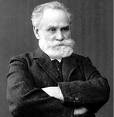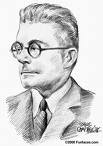miércoles, 8 de diciembre de 2010
The study showed that childhood amnesia between cultures like Korean, New Zealander and American person differences in age, such as Koreans at 4 years old, New Zealanders at 2.5, and Americansat 3.5 years old, researchers have found that in average age of first memories, it varies between the ages of two years between different cultures. This is due to the culture the child is raised in and the customs their parents have, and the society varies in the way they talk about their children, making it easier or harder for the child to remember the events of his or her childhood. The more the independent the customs and the country the more dificult it will be for it to remember earlier childhood events and the more countries that focus on individual personal history have earlier childhood memories, such as US.
Are all memories alike?
I the first experiment, the conducters tested form differences in memory between genders. the results showed the following.Women excelled in verbal episodic memory tasks, such as remembering words, objects, pictures or everyday events, and men outperformed women in remembering symbolic, non-linguistic information, known as visuospatial processing.This means man would be more likely to remember his way out of the woods. Also, women are better than men remembering faces, especially those of females, the reason seems to be that women allocate more attention to female than to male faces. The probability of genetically-based differences between the quality of male and female memory is unknown, the results suggest that females have advantage in episodic memory.
martes, 7 de diciembre de 2010
Articles on memory.
1.Experiment number 1 was conducted by Louise Faber, in their study he and his collegues proved that noradrenaline is the equivalent for the brain's adrenaline, it affects the brian's chemical, and electrical pathways that are responsable for memory formation. This could be applied in real life by helping psychologists controll our emotions of certain memories possibly elping with diseases like PTSD.
2.This experiment was conducted by Yaara Yeshurun. In the experiment, researchers showed adults with a visual object together with one, and later with a second, set of pleasant and unpleasant odors and sounds while their brains were imaged by functional magnetic resonance imaging (. And a week later, the researchers showed the same objects inside the fMRI and tested participants' associations of those images with the scents and smells. The study showed that people remembered early associations better when they were unpleasant, whether they were smelled or heard. This could be applied in real life as maybe a method of memorization, or study for big tests.
3.The experiment was conducted by Stefano Puntoni, Bart de Langhe, and Stijn van Osselaer who studied bilingual and trilingual populations in Europe. They showed different slogans with participants and found differences in how the messages were perceived in different languages. "Our findings show that, in general, messages expressed in consumers' native languages tend to be perceived as more emotional than messages expressed in their second language" said the conducters. THis experiment can be applied in the real life, maybe in situations of hostage negotiacion, it would help with tension.
Concpet of memory
1. Sensory memory is the memory where you recieve info from your senses, this travels to the brain. It is retained for a shot amount of time since this is not of great importance.
2.When you feel a surface and it transfers the info about its texture, this is rapidly forgotten.
3.visual about 1 second, and auditory about 4 seconds.
4.This is the stage after sensory memory, in here slective attion will pick which of the memories are important and move them from sensory memory to short-term memory. They are in the form of images or sounds, this gives room for short computations. After that they are moved to other parts of the memory system or discarded.
5.George Miller in 1956, and it is +/- 2 making it from the range of 5-9.
6. Chunking refers to the configuration of large amounts of information, into small ones, which a fit to structure and acomodation of memory.
7.Number:3-4 Letters:3
8.Acoustic
9.This type of memory can last from days to decades. Memories become long term with the proccess of rehearsal and meaningful association, this means that you see it quite often and you give it importance, therefore your brain remembers it for a longer period of time.
10.This model states that there are 3 ways of memory stores, sensory memory, short term memory and finally long term memory. It categorizes them by the duration they last, sensory being to the maximum of 4 seconds, short term memory being about 18-20 minutes, and it stores things by chunks, and finally long term memory which lasts up to a lifetime.
11.1. Not all of the rehearsal leads to the improvement of retention2. STM is in terms of the number of units that can be processed an any one time, he gave 7 +/- 2, but recent researchers have developed 5 +/- 23. The sensory stores are sensory systems, not memory systems as most people think of the term "memory."
12.This model concretes in Long Term Meory and the processing that occurs there, it gives an alternative to the multi store model that suggests info is transfered by rehearsal. This model suggests that the depth or level at which we process information determines its place in LTM and also how well we recall that information, meaning the more we think about it, the longer it stays in our head.
13.Continiously repeating the material to be remembered. Repeating vocabulary words to learn them.
14.This time of rehearsal involves comparing something new with something you already know that is stored in your Long term memory.Relating someone new you meet named John and associating it with someone you already know called John.
15.Craik and Lockhart developed in the year of 1972 the levels of processing models and the concepts of maintenance and elaborative rehearsal.
1. Sensory memory is the memory where you recieve info from your senses, this travels to the brain. It is retained for a shot amount of time since this is not of great importance.
2.When you feel a surface and it transfers the info about its texture, this is rapidly forgotten.
3.visual about 1 second, and auditory about 4 seconds.
4.This is the stage after sensory memory, in here slective attion will pick which of the memories are important and move them from sensory memory to short-term memory. They are in the form of images or sounds, this gives room for short computations. After that they are moved to other parts of the memory system or discarded.
5.George Miller in 1956, and it is +/- 2 making it from the range of 5-9.
6. Chunking refers to the configuration of large amounts of information, into small ones, which a fit to structure and acomodation of memory.
7.Number:3-4 Letters:3
8.Acoustic
9.This type of memory can last from days to decades. Memories become long term with the proccess of rehearsal and meaningful association, this means that you see it quite often and you give it importance, therefore your brain remembers it for a longer period of time.
10.This model states that there are 3 ways of memory stores, sensory memory, short term memory and finally long term memory. It categorizes them by the duration they last, sensory being to the maximum of 4 seconds, short term memory being about 18-20 minutes, and it stores things by chunks, and finally long term memory which lasts up to a lifetime.
11.1. Not all of the rehearsal leads to the improvement of retention2. STM is in terms of the number of units that can be processed an any one time, he gave 7 +/- 2, but recent researchers have developed 5 +/- 23. The sensory stores are sensory systems, not memory systems as most people think of the term "memory."
12.This model concretes in Long Term Meory and the processing that occurs there, it gives an alternative to the multi store model that suggests info is transfered by rehearsal. This model suggests that the depth or level at which we process information determines its place in LTM and also how well we recall that information, meaning the more we think about it, the longer it stays in our head.
13.Continiously repeating the material to be remembered. Repeating vocabulary words to learn them.
14.This time of rehearsal involves comparing something new with something you already know that is stored in your Long term memory.Relating someone new you meet named John and associating it with someone you already know called John.
15.Craik and Lockhart developed in the year of 1972 the levels of processing models and the concepts of maintenance and elaborative rehearsal.
jueves, 2 de diciembre de 2010
martes, 2 de noviembre de 2010



Alzheimer's disease is problably one of the worst ways to grow old. On the documentry that we saw in class it showed us different people, on different stages of the disease, some way more advanced than others. When a person reaches 65 years old, their chances of developing their disease increase greatly, and every 5 years after that chance grows exponentially. What alzheimer affects is in essence the long term memory of the diseased. As the stages progress the subject becomes much more alien to their memories, and motor skills. Normal everyday tasks that they would preform when they were young become almost impossible for them to execute. Things like driving, of even sorting groceries, this is since they forget key things like traffic signs. Also the jugdemente of the subject is also affected, they sort of go back to a childhood stage in which they are not resonable or trustworthy.I feel threatened by it, since it supposly runs in my family, although studies say other than that
lunes, 18 de octubre de 2010
After seeing this video having to do with memory, i think I view at things quite differntly. Since before this I did not know how crucial memory was to our every day living, sure i knew it was of some importance. But i could not see how it revolved around every single task, and action we take in life. After the video, there was not like some specific thing that I leraned, i think i just became more aware of concious of how memory is fragile. I think twice know before doing somethingh that could corrupt it or damage it. And also I became a bit mor afraid since my family has a genetical hisotry of al zaihmer. Which is a very sad disease that take out all of one's character before ending one's life. As of today when I see someone doing drugs, or drinking excessivly, I can not help it but to think of the damage that it will eventually cause in their memories, and expierences
Suscribirse a:
Entradas (Atom)

